1280: Capital at Wairau
October 17, 2019
By AHNZ
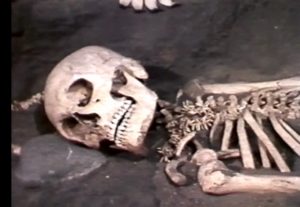 Maori entered an already occupied land as their traditional stories readily attest. The first known New Zealanders were the Moa Hunters or, in anthropological terms, the Archaic East Polynesian Culture of New Zealand¹.Evidence of these people goes back to at least the 1100s where they seem to have lived a nomadic lifestyle harvesting the seals, fish, whales, rats, tuataras and swans.
Maori entered an already occupied land as their traditional stories readily attest. The first known New Zealanders were the Moa Hunters or, in anthropological terms, the Archaic East Polynesian Culture of New Zealand¹.Evidence of these people goes back to at least the 1100s where they seem to have lived a nomadic lifestyle harvesting the seals, fish, whales, rats, tuataras and swans.
Like other people of the earth during this Medieval Warm Period the New Zealander’s did well and their megafauna could be hunted with impunity.
“Samples of shell, charcoal and bones from the site [Wairau] have been radiocarbon dated…put the date of occupation back at least as far as the 1100s. Even then, the moa hunters were so familiar with natural resources- for example, they used stone from both North and South Islands- that they must have reached the country much earlier.”- Cumberland (1981)
This also ties in with New Zealand’s entry in Tabula Rogeriana (1154.)
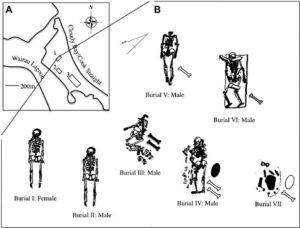 The young chief in the image above (burial IV on the right) was a citizen of the Moa Hunter capital of Wairau. This citadel at the top of the South Island was fed capital and consumer goods from outstations around New Zealand. Stone-works and meat-works came back to Wairau much in the same way that the Maori’s Ngai Tahu Camelot would work 400 years later.
The young chief in the image above (burial IV on the right) was a citizen of the Moa Hunter capital of Wairau. This citadel at the top of the South Island was fed capital and consumer goods from outstations around New Zealand. Stone-works and meat-works came back to Wairau much in the same way that the Maori’s Ngai Tahu Camelot would work 400 years later.
“At all the major river mouths in Canterbury and Otago were Moa “meat works” and “ovens”, where Moa were butchered, the bones smashed and the meat preserved in marrow fat. The method was much the same as oily mutton birds are preserved today. The preserved meat was transported by canoe back to the Stonehenge Village on the Wairau Bar.”- Jim Hilton; Kapiti Independent News
Up until establishment in about 1280 the Moa Hunter culture appear to have been nomadic. Great flocks of flightless, cumbersome, birds were helpless in the face of systematic hunting. The rise and fall of the Moa Hunters coincides with the Mediaeval Warm Period. While New Zealand was warm and moa fodder plentiful there was always another big bird to catch. However, as other prehistoric peoples discovered, when these climatic periods end the old megafauna-based economy must end too. When mammoth, woolly rhinoceros, giant deer, etc lost the environment that sustained them their predators (humans) hunted the last of them to extinction before finally adapting to the new game in town: Cultivation of plant foods.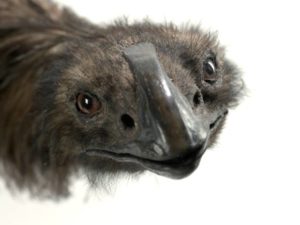
It seems that a Dignity Culture Moa Hunter economy was well on its way to making this adaptation. The establishment of Wairau with its logistics, arts, crafts, and meat preservation technology show that these people had a cultural response to the loss of a moa-based economy. However, their development was stopped in its tracks.
The Maori Invasion
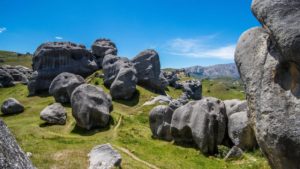 A different culture based, not on moa but on agriculture, had become favoured by the changing climate. Classical Maori were a competitive war-like people who battled over the best territories for growing their crops. Maoris were a weaponised people but the remains of the Moa Hunters show few weapons and no cannibalism.
A different culture based, not on moa but on agriculture, had become favoured by the changing climate. Classical Maori were a competitive war-like people who battled over the best territories for growing their crops. Maoris were a weaponised people but the remains of the Moa Hunters show few weapons and no cannibalism.
An agricultural territorialism era came to dominate New Zealand in this cold period. The Moa Hunters were swept to inland and southern refuges away from the carbohydrate-powered Maori invaders. They lost their moa, lost their good stone, their swans, lost their canoes, and they lost their luggage too.
“…the same thing happened in Stone Age Colonial New Zealand too. After an initial free trade era, some group must have put a strangle hold on the premium stone supply.”- 1300s: Game of Stones; AHNZ
“The C15th, Walter says, was characterised by the emergence of tribal boundaries. Large double hulled sailing canoe stock depreciated and was not replaced. An agricultural territorialism era rose to replace the free and easy early times when hunted and gathered food and fibre was plentiful. The small world that was New Zealand had become bigger, harder to pass through and that impacted the logistics of quality stone supply.”- 1400s: Tribal Boundaries Emerge; AHNZ
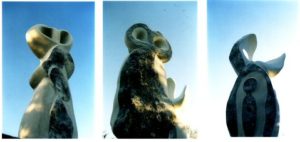
Some of these pre-Maori descendants are known to history as the Waitaha people. By c.1500 they had been destroyed or absorbed by Maori invaders called the Ngati Mamoe. Some of their cave drawings and perhaps stories remain. Even more pressure was put on what remained of these people as Ngati Mamoe pushed them off the face of the earth even as the same was done to them by Ngai Tahu in turn.
“To correct any misconceptions, these drawings are pre-Maori.”- Waitaha Statues “The Three Grandmothers”; hurunui.govt.nz
The Wairau graves are the most important archaeological find ever made in New Zealand. Yet, by 2007 only 2 percent of the site has been scientifically investigated. What tools, amulets, pendants remain in that ground? What can the bones tell us about how they lived? I think the current era has been too politically correct for anyone to want to ask these sorts of questions. However, in the 2020s attitudes will change and we can expect a strong new interest in these first New Zealanders.
—
Revisionist names for the same include ‘Proto Maori’ and ‘Archaic Maori’. (Anarchist history avoids Politically Correct retreaded terms wherever it can.)
Image ref. Moa Hunter Chief; ep02, Landmarks (1981)
Image ref. Aerial schematic; Quaternary Science Reviews (2012); researchgate.net
Ref. Wairau Bar; Wiki
Update, Feb 2021: “I note that the words “To correct any misconceptions, these drawings are pre-Maori.” Have been memory-holed by the council on that link. Might want to update with an archive link”….ref Internet Archive
2 thoughts on "1280: Capital at Wairau"
Leave a Reply
 Like Comment Share
Like Comment Share

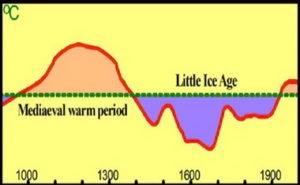
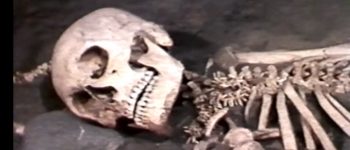




I note that the words “To correct any misconceptions, these drawings are pre-Maori.” Have been memory-holed by the council on that link. Might want to update with an archive link https://web.archive.org/web/20190313125801/http://www.hurunui.govt.nz/our-district/history-and-heritage/waitaha-statues/
Wups, history changed again! Thanks for that. Link added.